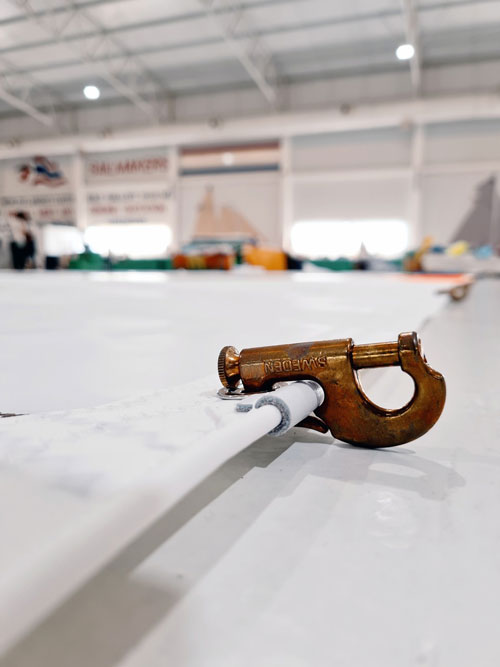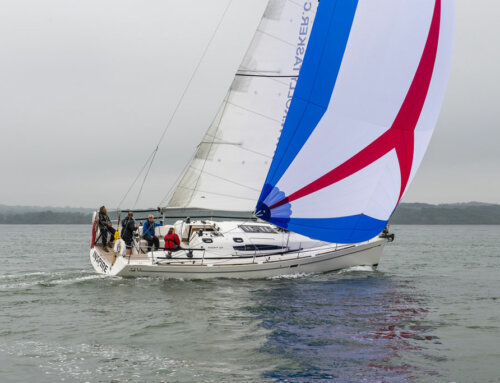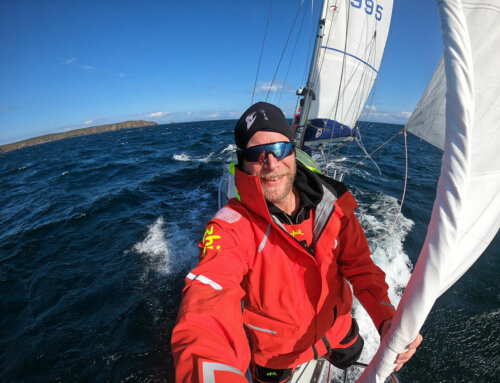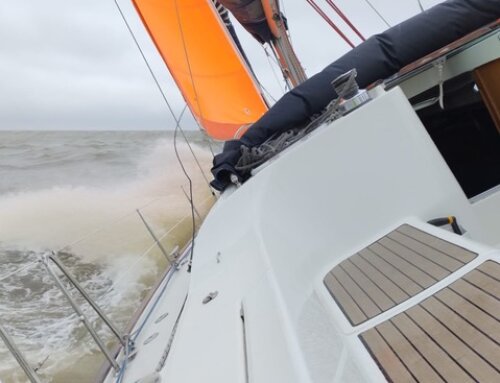“A jib is a jib is a jib”, according to the American writer in last century’s Paris, Gertrude Stein (in a slightly modified quote). Is it? Well, Trudi, not really. As usual, the more choices we have, the more complex it all gets. Which could be a point in case for one-design classes, many of which only allow one size of jib. Easy.
WHAT DO YOU REALLY NEED?
On the other hand, this would be one sail for all conditions, from very light airs to heavy winds. Not ideal, neither for cruising, nor for racing. So, what do you really need? This obviously also depends on the type, size and rig concept of your boat. But for the broader view, we can safely generalise a few basics to look out for in a standard Bermudan sloop rig.

UPWIND SAILING
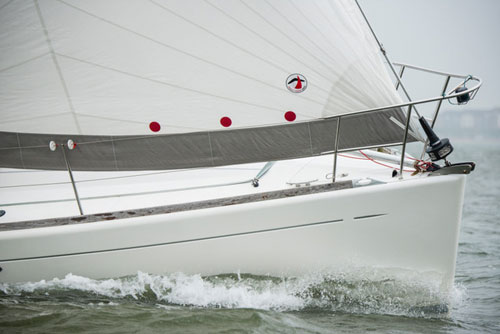
In this article, we are talking about upwind sailing, or on a close reach with the wind forward of the beam, or at an angle of 90 degrees or less. It is here that these foresails work best. As soon as the wind is on the beam or further aft, or at an angle of 90 degrees or more, our modern and easy to handle downwind sails come into play – but that is another story.
THE GENOA
On the average sloop rig, the Genoa is a highly efficient sail that not only produces enormous drive by itself, but also creates and controls the flow of air over the mainsail. For both reasons, it is important for the Genoa to hold its shape and be trimmed correctly. Genoas vary in size, from a smallish sail like a working jib right up to a very large, very far overlapping lightwind sail. A Genoa, by the way, is named after the Italian town of Genoa. In 1927, during a race of the 6-metre class boats, the Swedish sailor Sven Salén first used a large, overlapping headsail in the typically light winds off Genoa. The sail since then carries this name.
DIFFERENT GENOAS
On full-out racing boats, there will probably be quite a few Genoas of different sizes and (cloth) weights to choose from. Stowage is no problem on board a racing boat, the crew in this case will not mind having to crawl over heaps of sail bags in the accommodation. On a cruising yacht, however, where stowage space usually is precious, the crew will not want to carry too many different sails on board. A good selection would be three Genoas: A Genoa I for light winds (150%), a Genoa II for fresher breezes (135%) and a Genoa III for strong winds (105%). With the decrease in size (given as percent in overlap of the mast), the profile will become flatter and the cloth heavier.
Most cruising yachts today are fitted with a roller furling system for the Genoa. And most will carry a Genoa II on this, to be able to cover a wide range of wind speeds. A Genoa II can still perform in light winds built will, one the other hand, also be heavy enough to be able to be sailed part-furled in a breeze.
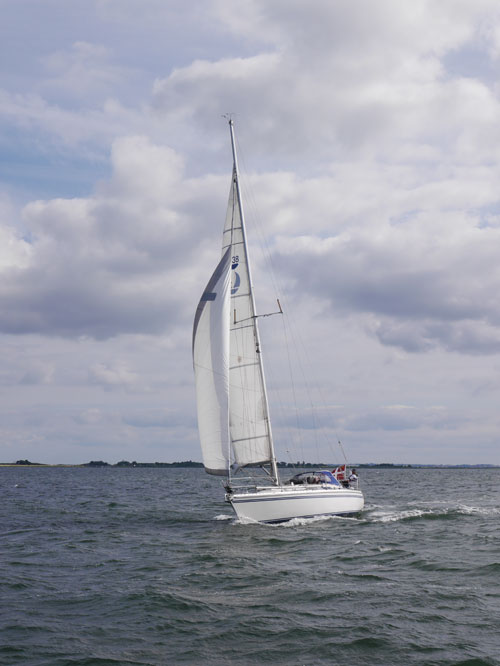
CLOTH AND CUT

Genoas on performance-oriented boats will often be made from advanced laminates. Such as our CDX Pro Laminate, which offers best shape-holding and high durability. These sails will usually be designed in a tri-radial cut which makes these sails extremely good in holding their carefully designed shape. Our Lite Skin fabric is a good choice for even more performance orientated sailors, who might also participate in racing at club level. Lite Skin fabric has excellent shape-holding characteristics but is slightly less durable than CDX Pro, while much more robust and durable than modern membrane fabrics. A Genoa made for roller furling use will usually be made from one of our high-quality Dacron cloths for ease of use when furling. These can either be designed as cross-cut or tri-radial sails, the choice of which depends mainly on how much you want to spend for that extra bit of drive…
HANKS OR ROLLER FURLING
This really is an alternative for cruising boats only. Racing yachts will set their Genoas on a luff tape profile on the forestay. For cruising, however, roller furling has more or less become the norm. And it is easy to see why, as it seems to be so convenient to just furl up the foresail without having to do anything on the heaving foredeck. However, a Genoa on a furler will throw you back to the “one sail for all conditions” situation. Even although the Genoa can be used part-furled, the shape then is more or less destroyed. Over time, the profile of a furling Genoa that is often sailed partly furled gets deeper and moves further aft, resulting in more heeling and less performance. And changing a headsail on a furling system while at sea, on a cruising boat that will, unlike a racer, not have a full crew of strong and experienced sailors on board, is extremely impractical.
For short daysailing-type hops along the coast, however, with frequent stops in marinas or at anchor, the furling headsail is of course very easy to operate. Our modern foresails designed for furling, especially with added luff padding, will set well either fully let out or even part-furled.
BLUEWATER OPTIONS
Our specially developed Crescent Cut Genoas are an interesting option for serious passage making at sea. A double leech and foot greatly reinforce the sail when used in reefed condition, reducing the negative consequences of reefing a furling sail as described above. This is a strong and reliable sail even when reefed and part-furled.
HANKED-ON SAILS
Many long-distance ocean cruising sailors actually prefer hanked-on foresails. These can be changed at sea, as the sail will still be securely attached to the stay also when taken down on deck. On passage, some cruisers already have a second, either smaller or larger foresail ready to set, tied along the railing.
STORM JIB
A storm jib can be set in basically two different ways. Either with hanks on an inner forestay or cutter stay (which could either be permanently rigged or only set up, with a tensioning lever at deck level, when the storm jib actually is in use). Or, for all cruising boats using furling headsails, we have our specially designed Gale Sail. This is a storm jib with a sleeve along the luff that actually slides over the furled-up Genoa. This eliminates the need for an extra stay, making it easy to set, and it also gives extra security for the furled-up Genoa, helping to prevent it from being accidentally unfurled by the gale force winds.
